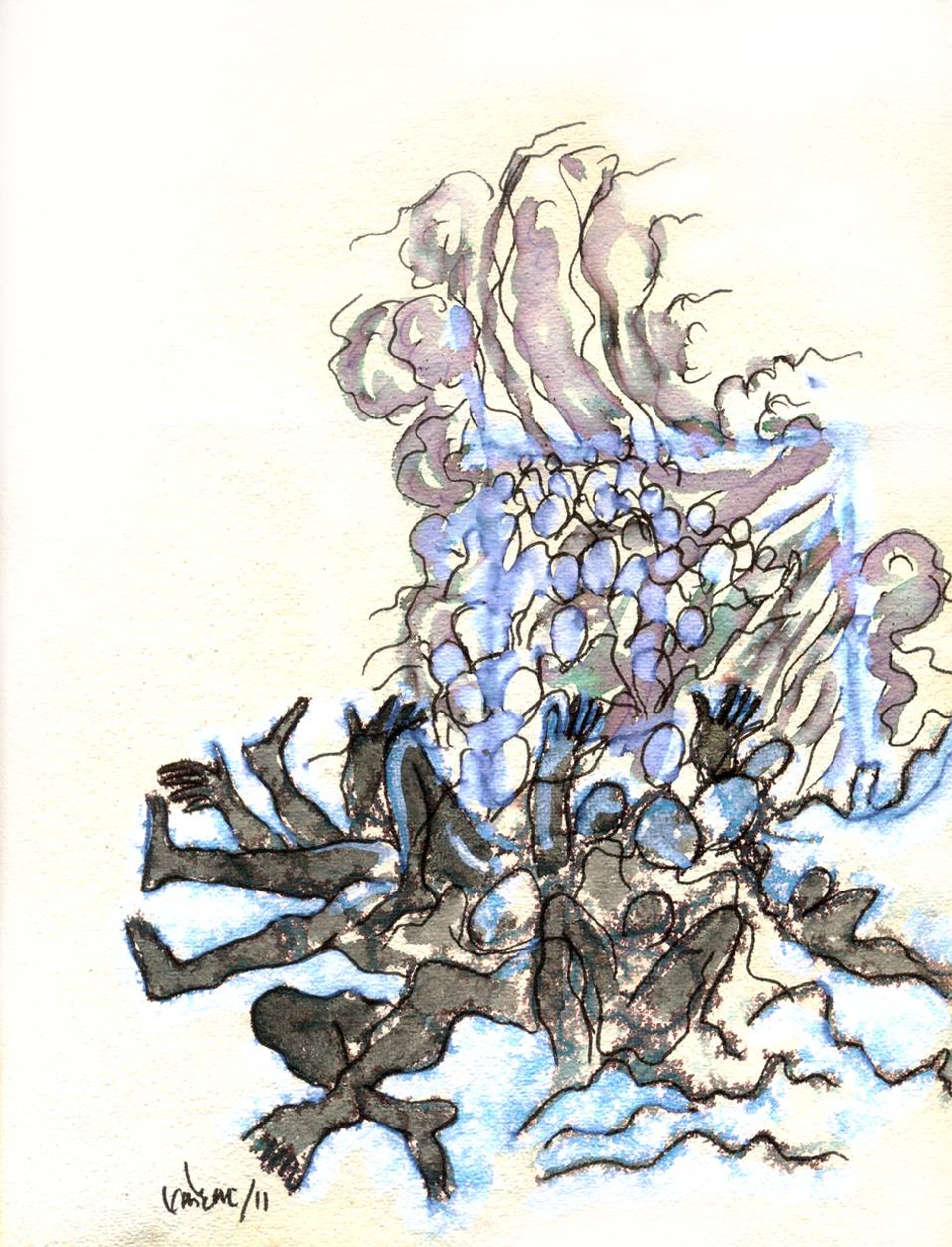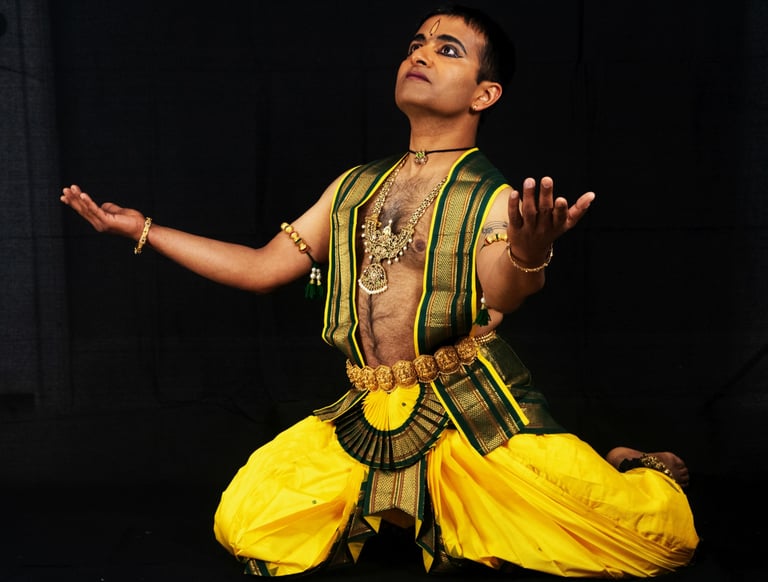Excerpts from Performances

Meenakshi Varnam
Excerpts from a Varnam dedicated to Goddess Meenakshi, the reigning deity of the ancient town of Madurai.
Meenakshi was born with three breasts, symbolizing hyperfeminity. She was raised as both a Prince and Princess, learning all the musical arts, as well as warfare. The story goes that she aggressively conquered the whole of India, reaching the abode of Siva, the Kailasha mountain in today’s Tibet. When Siva encountered Meenakshi, her third breast disappeared, and she brought Siva to Madurai as her consort in the form of Sundereshwara, the beautiful Siva. Meenakshi ruled for a long time and is considered as the Queen who established Tamil culture among the great classical cultures of the world.
The confluence of Purusha (Siva), and Prakriti (Shakti) forms the constituents of the universe according to Sankhya. Meenakshi, who in her maiden form with 3 breasts could be considered as a symbol of hyperfeminity, finds the balance with her union with the masculine consciousness manifested as Siva.

Composition: Madurai Muraleedharan
Choreography: Janaki Sivaraman
An excerpt jathi (rhythmic movements)
Story of Meenakshi's birth and her union with Siva


Revenge of Shakuni
A dance drama choreographed by Kshitiz on excerpts of his poem, the Revenge of Shakuni.
Shakuni ka Pratishodh, or the Revenge of Shakuni centers Shakuni as the key choreographer of the Great War of Mahabharata. The common narrative is that Shakuni was an ally of Suyodhana, sometimes called Duryodhana, the Kaurava prince. This story will present Shakuni in a new light. Shakuni was no friend of the Kauravas, but instead wanted to extract revenge from them by decimating the Kaurava clan. Shakuni was the youngest of the 100 Princes of Gandhara, today’s Kandahar in Afghanistan, which was a great center of learning and philosophy thousands of years ago. The blind Dhritarashtra defeated Gandhara’s king, forcibly marrying the Princess against her will and subjected her 100 brothers to cruelty. Cruelty for the sake of it are unacceptable in all Hindu rules of warfare.
The story goes that 100 Gandhara princes, including Shakuni, were just given only one morsel of food each day. The objective was to let them die slow and painful deaths. To avoid their inevitable demise, the 100 Princes combined their share to give it only to the youngest brother, Shakuni. The 99 elders sacrificed their lives so that Shakuni lives and extracts the revenge against the future Kauravas when he is capable. The Mahabharata can therefore be interpreted as an outcome of Shakuni’s revenge against the Kauravas.
Composition, Voice Over: Kshtiiz
Choreography: Kshitiz
A dance drama written based on Mahabharata, in the kingdom of Gandhara (current Afghanistan's Qandhar, when it formed the periphery of Hindu empires)
Shakuni ka Pratishodh (The Revenge of Shakuni)

A clip of Shakuni ka Pratishodh


The dance of the divine bull Nandi
Nandi Chol is a rhythmically complex piece showing Nandi, the divine bull, and the guardian deity of Kailasha, the abobe of Shiva and Parvati. All temples of Shiva display a stone idol of Nandi facing the shrine, as if waiting for Shiva from a distance. In this piece, Nandi is holding a drum around his neck, and dancing to its beat, cajoling Shiva to come and ride him.
Nandi is an ancient deity, and is considered as the repository of Agamas and Tantras, initiated by Shiva and Parvati. Nandi is also a symbol of nyaya, or justice and balance, mounted on the Dharmadanda, or Sengol placed recently in the Indian Parliament. Nandi was born to sage Shilada, who received a blessing in the form of his son who was always going to be present with Shiva. Nandi is also the one who gave the treatise of Kamasutra to the Sage Vatsyayana.
In this piece, the dancer presents Nandi playing the drums around his neck, asking Siva to come and ride him. Shiva shown as the majestic manifestation with Ganga flowing gently from his lock of hair, comes along and majestically dances with Nandi.
Raga Khanda Triputa Jati, Composed by Sh Ramesh Babu, and Choregraphed by Sheejith Krishna.
Watch the full dance here: https://www.youtube.com/watch?v=kynZ5Atcrko
Composition: Ramesh Babu
Choreography: Sheejith Krishna
Shakuni ka Pratishodh (The Revenge of Shakuni)
Kshitiz's performances beautifully bring ancient stories to life through the grace of Bharatanatyam.
Ananya


★★★★★